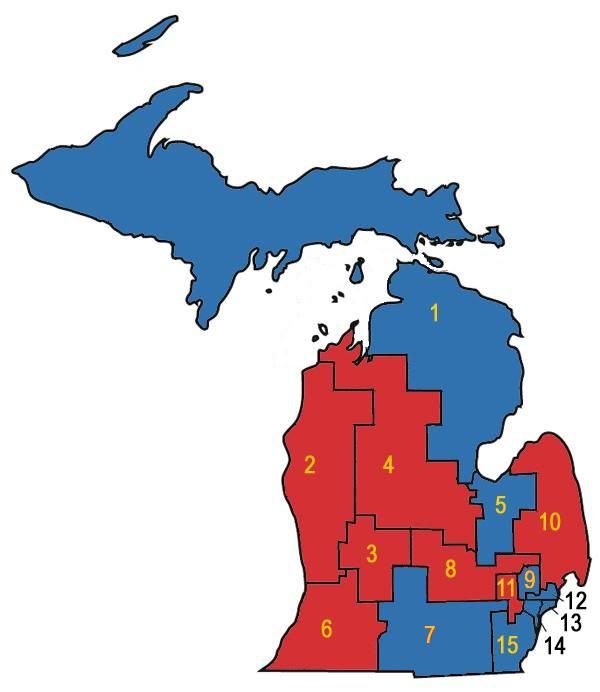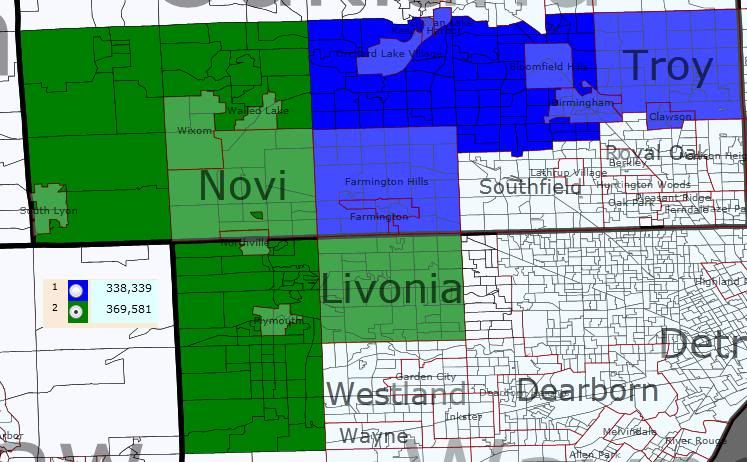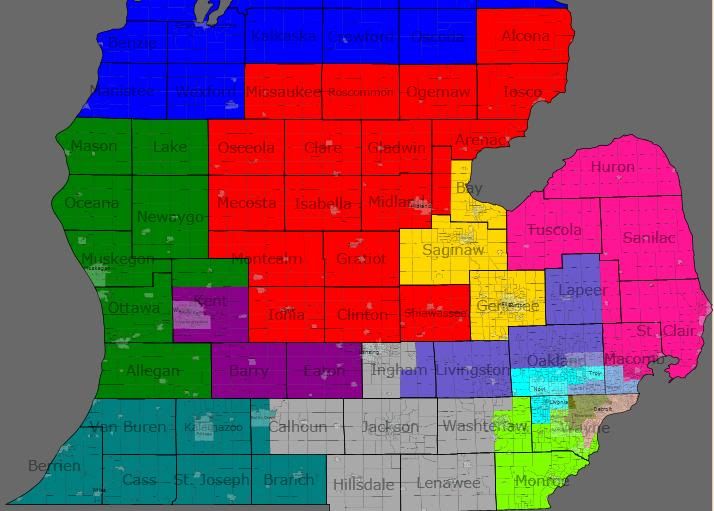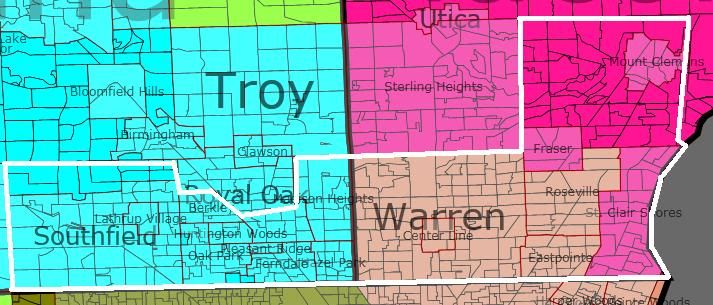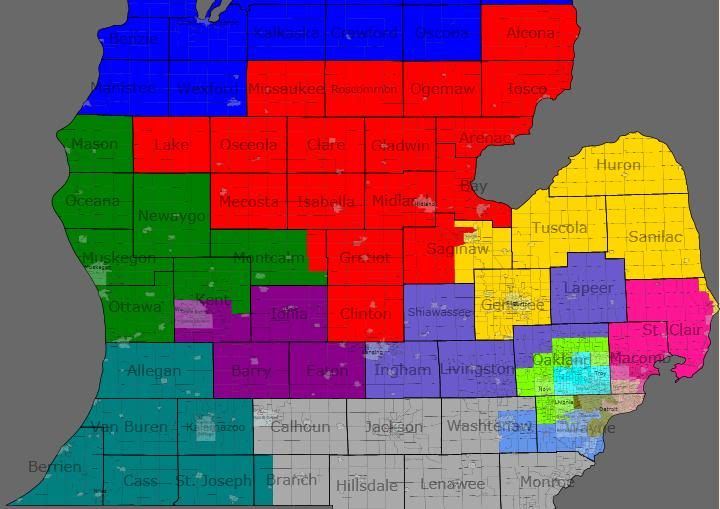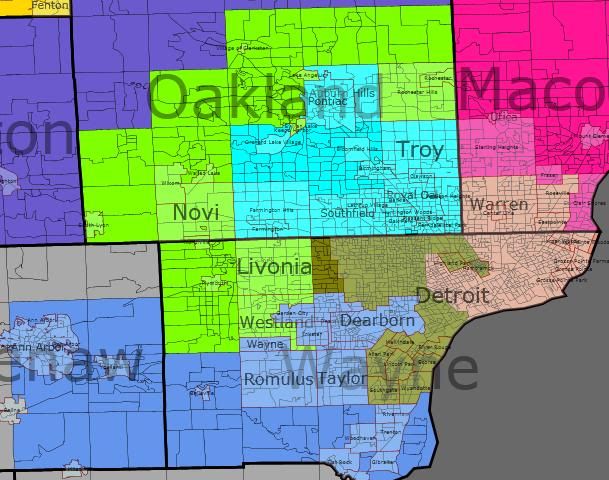• HI-Sen: Both Rep. Mazie Hirono and Rep. Colleen Hanabusa have confirmed to Roll Call that they are looking at the Dem primary to replace retiring Sen. Dan Akaka, and Hanabusa says she’s meeting with the DSCC, presumably soon. She also says that the DS “has made it known it wants to speak with anyone interested in running, but it is not actively recruiting any one candidate” (Roll Call’s phrasing).
• IN-Sen: So GOPer Richard Mourdock raised $157K, not much better than the $125K or so he predicted (in an obvious attempt to ensure he “exceeded analysts’ estimates,” as they might say after a Wall Street earnings call). But I flag this item because Roll Call says Mourdock plans to “raise money from a national donor base starting next year.” Does this mean he’s going the Sharron Angle/Michele Bachmann/Allen West BMW Direct-type direct mail scammery? (See related bullets below.) If so, then perhaps Dick Lugar is in better shape than he might have hoped.
• MO-Sen: This is news to me: Sophomore GOP Rep. Blaine Luetkemeyer is apparently thinking about a Senate bid, and has reportedly even met with the NRSC about his intentions. Dave Catanese says that “uncertainty about redistricting” is spurring Luetkemeyer to consider other options, but I’m not sure I buy that, seeing as the new maps being considered by the Republican-held legislature offer him a very comfy seat. The real puzzler is why he’s doing this when six-term Rep. Todd Akin seems to be gearing up for a Senate run, since there’s almost no way the two would want to fight it out in a primary. Maybe Lute thinks he can be Plan B if Akin demurs.
Another reason cited by Catanese (which applies equally well to both congressmen) is ex-Treasurer Sarah Steelman’s crappy fundraising. She pulled in just $186K in Q1, which would be unimpressive for a supposedly serious candidate in almost any state. If Akin gets in, I think there’s a non-zero chance that she’d drop out.
• MT-Sen: Nice: Sen. Jon Tester (D) raised $1.2 million in Q1 and has $1.5m on hand. His Republican opponent, Rep. Denny Rehberg, raised less than half that, $580K, but has $932K in the bank.
• NE-Sen: Sen. Ben Nelson raised $1 million in Q1 and has $2.3 mil on hand. His chief Republican rival, AG Jon Bruning, raised $1.5 million and has $1.2 in the bank, but Nelson pointed out that $600K was transferred from Bruning’s 2008 Senate account (when he briefly sought to primary Chuck Hagel; after Hagel announced his retirement, Bruning was squeezed out by former Gov. Mike Johanns).
• OH-Sen: Former state Sen. Kevin Coughlin, whom we’d mentioned previously as a possible candidate, has filed paperwork for an exploratory committee, joining Treasurer Josh Mandel in this in-limbo category in the GOP primary.
• TN-Sen: I feel like there’s an alternate universe not too dissimilar from our own where a Republican dude named Bob Corker is also freshman in the U.S. Senate, and he’s also up for re-election, except Corker Prime is actually vulnerable. Here on Earth, though, it really seems like Corker is well out of reach for us. He raised an impressive $1.9 million in Q1 and has over $4 million in the bank – and there are no Democratic candidates on the horizon.
Gubernatorial:
• MO-Gov: Gov. Jay Nixon lapped his likely Republican opponent, Lt. Gov. Peter Kinder, on the fundraising circuit, pulling in over twice as much money over the last six months, $1.7 million to $770K. Nixon also has a big cash-on-hand edge, $2.1 mil to $900K.
But other than that, Mrs. Lincoln, how was the show? Well, pretty terrible, actually – Kinder’s had just an awful few weeks in the press. After the St. Louis Post-Dispatch revealed his penchant for spending taxpayer money to stay in luxury hotels to attend baseball games and society balls, Kinder promised to reimburse the state $35K… but two weeks later, he still hasn’t. That nimbus definitely isn’t moving anywhere just yet, and it’s his own damn fault. Let’s hope he runs the rest of his campaign the same way.
• NC-Gov: This just doesn’t seem good. Gov. Bev Perdue, whose public image has already suffered enough damage, was out-of-state Saturday afternoon when a series of deadly tornadoes touched down in North Carolina. She was attending a horse race in Kentucky and didn’t make a public appearance back home until 11pm that night. I’m not going to predict what this will mean for Perdue, but it can’t be helpful.
• WV-Gov: SoS Natalie Tennant’s first ad is a hokey spot set on a farm, in which she decries politicians wasting money… and a cow can be heard to moo. (Or a bull. I don’t know. It has horns. But small ones. So maybe still a cow? Do bulls moo? I’m from the city – sue me.) Tennant is generally seen as the candidate with the greatest appeal to liberals (yes, there are some in West Virginia), so she’s clearly trying to play against type here.
House:
• AZ-08: Rep. Gabby Giffords raised $358K in Q1 and has $556K in the bank.
• CA-19: Freshman GOP Rep. Jeff Denham (I admit it – I had already forgotten who he was and had to Google him) is already making a name for himself. That name is “idiot.” He staged a mega-lavish DC fundraiser in January when he was sworn in which featured singer Leann Rimes and spent an amazing $212,250 on the event. Total raised? $212,900 – which means he netted exactly $650. That’s quite the feat. It’s even more amazing when you consider it was all supposed to benefit a joint fundraising committee for 11 GOP frosh. To rub it in, Michael Doyle of the Modesto Bee archly observes: “If the $650 netted from outside contributors were to be divvied up evenly, each of the 11 GOP lawmakers would receive $59.”
• CA-36: Janice Hahn outraised Debra Bowen in Q1, $273K to $195K, and has about double the cash-on-hand, $171K to $93K. Surprisingly, Marcy Winograd managed to raise $50K. (And if you care, Republican Craig Hughey lent his campaign $250K.)
Bowen also put out an internal from the Feldman Group. In a test of apparently all the candidates who have filed, she and Hahn tie for 20, with Republican Mike Gin the next-closest at 8 and Winograd at 6. The memo also says that in a two-way runoff, Bowen leads 40-36 with 16% undecided. The poll also claims that Hahn’s unfavorability rating is “double that of Bowen,” but a self-respecting pollster really shouldn’t include such tripe, because the refusal to release actual numbers means we’re talking about something like a 12-to-6 comparison (i.e., meaningless). As mi hermano G.O.B. Bluth would say, “COME ON!”
• FL-08: Hah! Does Daniel Webster want to lose? The GOP freshman raised just $30K in Q1, but the really funny part is that the guy he defeated, Alan Grayson, raised more! Grayson took in $38K, apparently from small donors who hope he’ll make a comeback bid.
• FL-22: Allen West raised a seemingly-impressive $434K in Q1, but as you know, he’s a major practitioner of the churn-and-burn style of shady direct-mail fundraising, and it really shows in his burn rate. He spent an amazing $266K last quarter, which both as a raw total and a percentage rate is exceedingly high… but see the MN-06 and NV-02 items below.
• IA-04: Interesting, though not surprising: Politico says that DCCC chair Steve Israel warned Christie Vilsack off of challenging Dave Loebsack in the new 2nd CD, assuring her that the D-Trip would back the incumbent. He also apparently promised to support her if she took on Rep. Steve King (as she supposedly might do), though who knows what kind of $ that might translate into.
• IL-03: Insurance exec John Atkinson, who is apparently challenging Rep. Dan Lipinski in the Democratic primary, raised $535K in Q1, including $312K from his own pockets. Lipinski raised just $138K but has $637K on hand.
• MN-08: Freshman GOPer Chip Cravaack raised just $121K in Q1 – so why are we having such a hard time finding a Dem willing to take this guy on?
• MN-06: Michele Bachmann raised a MIND-OBLITERATING $1.7 million in the first quarter… and yes, I’m being sarcastic, because she also managed to spent $756K. Of course, netting a million bucks ain’t bad (and she has $2.8 mil on hand), and if she truly pulls the trigger on a presidential run, I’ll bet the spigots will open even wider. But that’s still quite the burn rate.
• NV-02: Sharron Angle makes Allen West look as parsimonious as Scrooge by comparison. Everyone’s favorite nutter (okay, it’s a multi-way tie, but you know you love her) raised an amaaaaaaaaazing $700K in Q1, but spent an actually amazing $550K, mostly to BaseConnect, the scam artists formerly known as BMW Direct. She has only $176K in the bank.
• NY-26: Republican Jane Corwin is not fucking around: She raised just $102K in Q1, but gave her own campaign a whopping million dollars. Yow. Meanwhile, Crazy Jack Davis has raised zilch, but has loaned himself $1.5 mil and already spent $1.4 mil.
Other Races:
• Denver Mayor: SSP commenter Kretzy has a really good run-down on the May 3rd Denver mayor’s race, necessitated by John Hickenlooper’s ascension to the governor’s mansion. I won’t try to summarize it – you should just click through. Timely, too, because SUSA has a poll out on the race, showing James Mejia and Chris Romer tied at 22, with Michael Hancock next at 18. Again, read Kretzy’s summary if you want to know more about these people.
• Wisconsin Recall: Signatures were filed yesterday to force a recall election for a third Republican state senator, Luther Olsen, and Dems expect to file petitions for Sheila Harsdorf today. (Number of Dem state sens who’ve had petitions filed against them so far: 0.) Also, the state’s Government Accountability Board says it will try to consolidate the recalls into as few elections as possible.
Grab Bag:
• DSCC: In an item about Herb Kohl raising $0 last quarter (he can cut himself a fat check any time he pleases, so this isn’t meaningful), Dave Catanese says that DSCC chair Patty Murray said “she was confident all of the remaining incumbents were running for reelection.” Kohl is the most obvious candidate for retirement, and of course Murray could be wrong, but maybe this is it.
• Fundraising: The NYT has a list of fundraising by freshman Republicans, and also notes that IN-08 Rep. Larry Bucshon took in just $45K. Not really wise for a guy whose district is likely to be made at least a bit more competitive. The Fix also has a fundraising roundup.
• LCV: The League of Conservation Voters is launching a $250K radio ad campaign targeted at four members of the House who voted in favor of a bill that would bar the EPA from regulating greenhouse gas emissions. The ads are hitting two Republicans running for Senate, Denny Rehberg and Dean Heller, as well as Energy Cmte Chair Fred Upton (R) and Jason Altmire (D). Here’s a sample ad (targeted at Heller), which I actually find kinda weird and confusing.
• Passings: Former Rep. Harold Volkmer, who represented mostly rural northeastern Missouri’s 9th CD for ten terms, passed away at the age of 80.
Redistricting Roundup:
• Colorado: Now this at least is a fight that makes sense: Republicans control the Colorado House, while Dems control the Senate – and tempers have already exploded with the release of proposed redistricting plans from both sides. (See yesterday’s digest for the maps.) Speaker of the House Frank McNulty flipped out, accusing Democrats of drawing districts that would benefit two legislators in particular: Senate President Brandon Shaffer and Sen. Morgan Carroll.
However, Carroll said she has no plans to run for Congress, while the Dem point-man on redistricting, Sen. Rollie Heath, pointed out that the new 4th CD (which McNulty thinks Shaffer wants to run in) has a 10 percent GOP registration edge… in other words, not the kind of seat you’d drawn for yourself if you were an ambitious Democrat. So either McNulty is just a garden-variety moran, or he’s just trying to cast fact-free aspersions against the other side. We’ve seen a lot of this kind of crap from Colorado Republicans already, so door number two is a definite possibility (but of course, it’s not mutually exclusive of door number 1).
• Missouri: Trying to unlock a stalemate that seems remarkably picayune to outsiders such as myself, Republican power brokers in Missouri met yesterday to talk things over. Among the participants were most of the Republicans in the state’s congressional delegation, the heads of the state House and Senate, and the chair of the MO GOP. No sort of deal has been announced as yet.
• Virginia: Hah – so much for lawmakers racing back to work to deal with Gov. Bob McDonnell’s veto of their redistricting plans. Legislators had planned to be off this week, so rank-and-file members declined leadership’s entreaties to show up.
